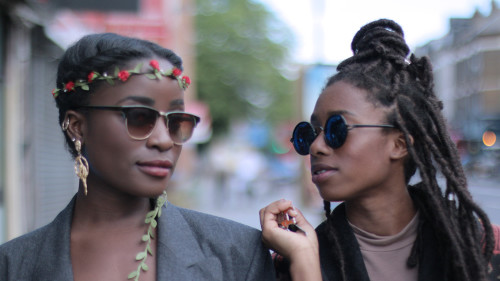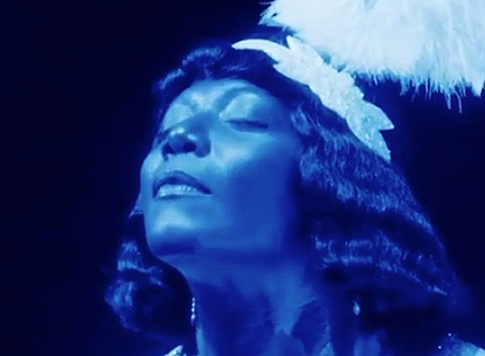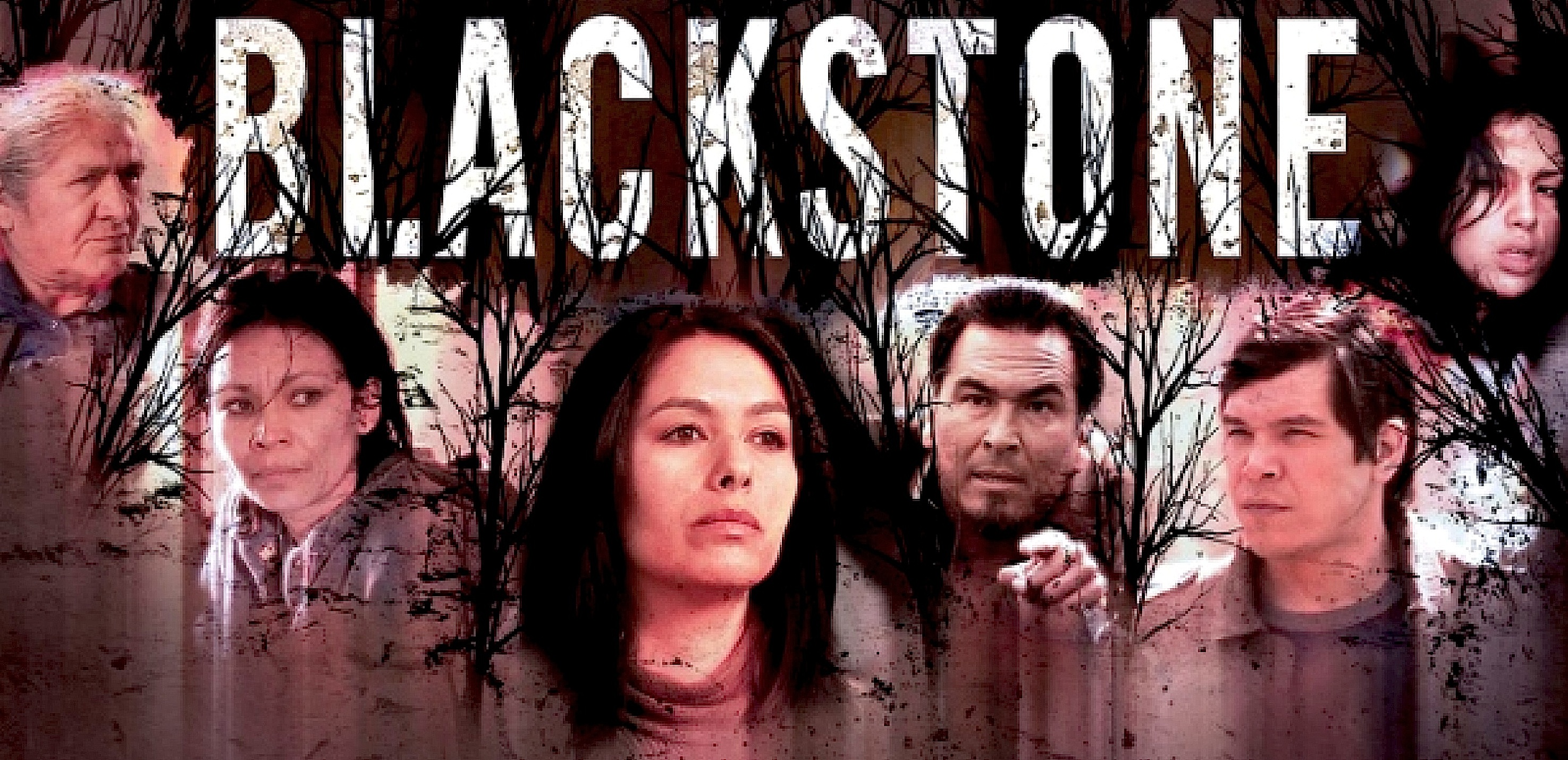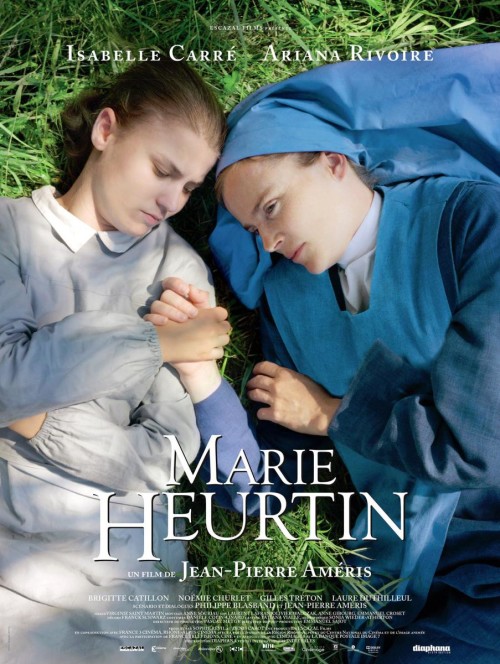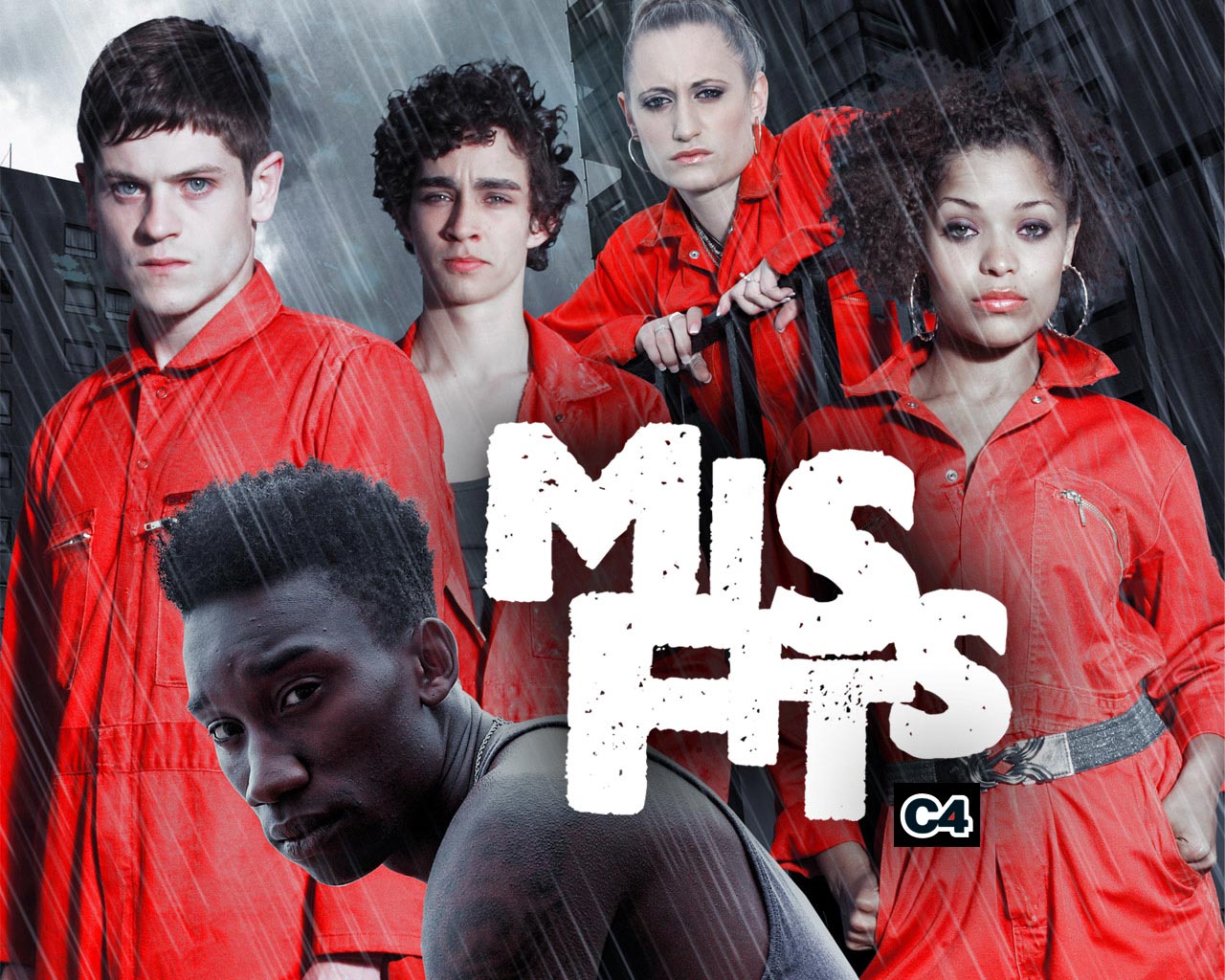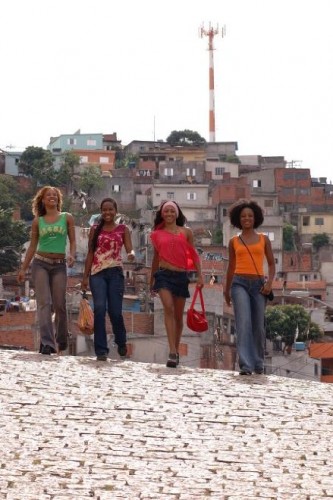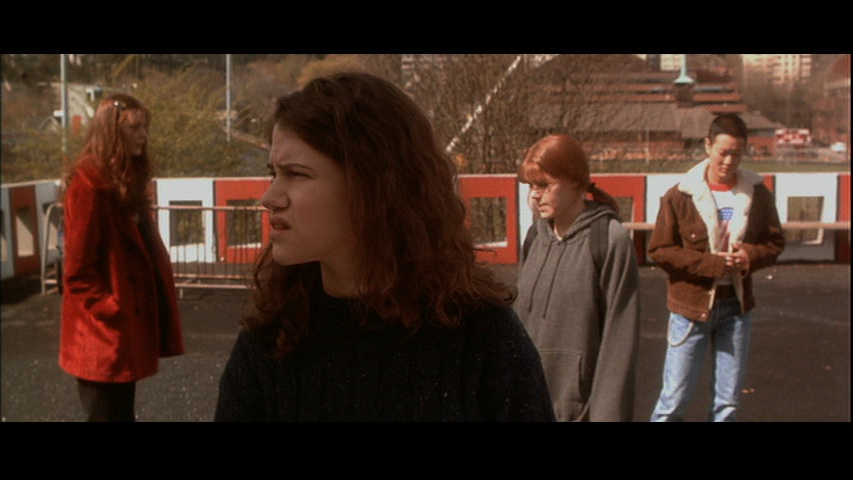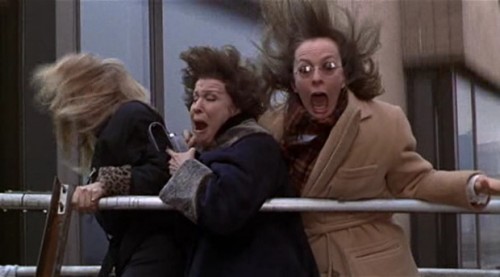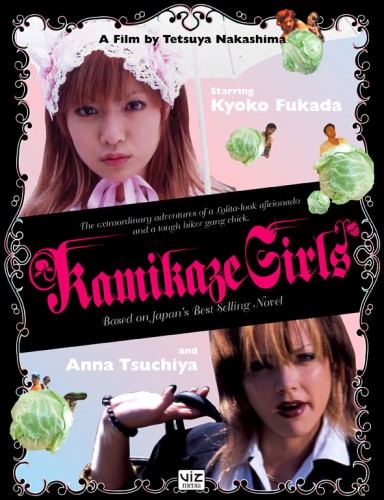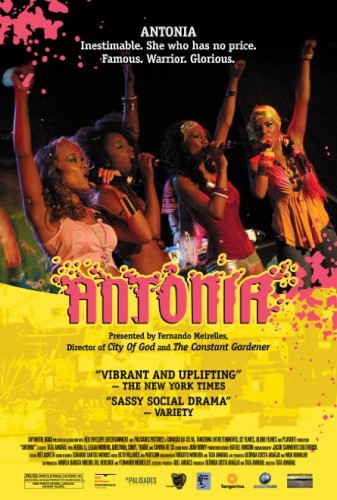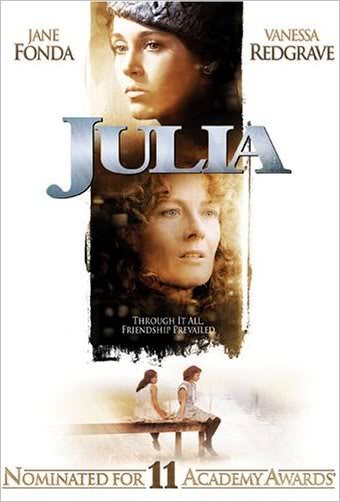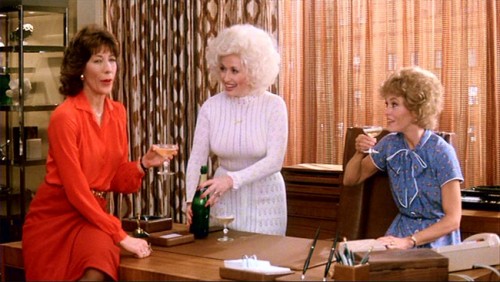Pretty Little Friendships by Victor Kirksey-Brown
I don’t know if the writers portray this type of friendship and steer away from many of the harmful female friend tropes on purpose, or if it’s just because there’s no way to fit them in with all the other crazy shit that’s going on, but the strong and positive friendship these girls share is one of the reasons I enjoy Pretty Little Liars.
“I’m a Veronica”: Power and Transformation Through Female Friendships in Heathers by Alize Emme
A snappy dark comedy set in a high school bubble, Heathers touches on difficult subjects including murder and suicide, and nonchalantly addresses major social issues like female friendship and power. The friendships we are introduced to steer every aspect of the story as it progresses and bring us into a world where female characters aren’t just cardboard cutouts but multidimensional, seriously flawed, and sinfully interesting young women.
It Takes Two for Friendship by Laura Money
To me, this movie is all about a deep female friendship. Yes, it is a bit narcissistic on the surface – instantly falling in love with someone who looks just like you – but it really captures the essence of friendship, connection, and trust. Alyssa and Amanda realise that they look alike on their first meeting but soon understand that they are also both deeply unsatisfied with particular elements in their lives.
“She’s My Best Friend”: Friendship and the Girls of Teen Wolf by Andrea Taylor
The girls of Beacon Hills, especially Allison and Lydia, are loyal, dedicated friends. They help each other out and they encourage each other. They stand up for each other. They’re best friends with all the complexities that relationship implies. There are better, or at least more consistent, examples in media to turn to, but the perfect moments of female friendship in Teen Wolf mean a lot to me.
You’ll Never Walk Alone: Heavenly Creatures and the Power of Teenage Friendship by Caroline Madden
Peter Jackson shows the girls interacting and playing in these worlds. “The Fourth World” is a beautiful garden. Borvonia is a dark and delightfully wicked world of castle intrigue and courtly love. Seeing the girls in the worlds they’ve created demonstrates the extent of the fantasies and the pleasures their imaginative and playful friendship brings. Pauline and Juliet have an intense friendship; they don’t want anyone to stand in their way of spending time together or stop the joy that it brings for them.
Why This Bitch Loves the B— by Mychael Blinde
I avoided Don’t Trust the B— in Apartment 23 for quite a while; at a cursory Netflix glance it looked like anti-feminist tripe featuring catty women pitted against each other in a false dichotomy of “nice” and “bitch.” Then I watched it.
I could not have been more wrong.
The Queer Female Friendship of Frances Ha by Sarah Smyth
For Frances Ha is not a film where “boy-meets-girl,” and there is definitely no diamond ring. The love story of Frances Ha is between the titular character, Frances (Greta Gerwig) and her best friend, Sophie (Mickey Sumner), and it is precisely this friendship between two women which questions, resists, and challenges the definition of love posed by the (primarily) heterosexual and (almost always) heteronormative romcom genre.
I Married a Monster: Female Friendship in The Other Woman by Chantell Monique
Instead of hating and seeing each other as competition, the women form a bond, increasing their woman-power. Kate decides that she wants to make Mark pay for his unfaithfulness saying, “I want him to have to start over,” but she’s afraid she doesn’t have the killer instincts to do it. Her new friends step in, telling her that she does and that if they work together, they can get their revenge.
In Spite of Mean Girls: The Radical Vision of Pretty Little Liars by Jessica Freeman-Slade
In her bestselling collection ‘Bad Feminist,’ Roxane Gay starts the listicle entitled “How to Be Friends with Another Woman” with this as the very first item: “Abandon the cultural myth that all female friendships must be bitchy, toxic, or competitive. This myth is like heels and purses—pretty but designed to SLOW women down.”
Romy and Michele’s High School Reunion: Bosom Buddies Against The World by Emma Kat Richardson
While there’s quite a bit that’s frivolous about Romy and Michele – the film’s tagline is “The Blonde Leading the Blonde” – there is also, much more importantly, the heartwarming love story at the film’s creamy center. But this love has nothing to do with the complications and disappointments that romantic relationships can bring; rather, it’s what the Greeks called agape, or a deeply spiritual, passionate love between intimate friends.
We’re All for One, We’re One for All in A League of Their Own by Rhianna Shaheen
At the end, many of the league’s players reunite to be inducted into the National Baseball Hall of Fame. Old friendships rekindle and emotions soar. After following these women through what must have been the best time they ever had in their youth it is refreshing to see authentic portrayals of them as older women. It feels like their lives are unfolding before my eyes.
Walking and Talking With Non-Toxic Women Friends by Ren Jender
A short clip at the beginning of writer-director Nicole Holofcener’s first film, 1996’s Walking and Talking, lets us know that Amelia (Catherine Keener) and Laura (Anne Heche) have been friends since adolescence. Both are in their 30s and living in New York City–Laura with her boyfriend Frank, and Amelia alone in the sort of sunlit airy apartment someone with her job, even in a pre-gentrified New York (which, like many films from then and now is also mysteriously bereft of people of color), would never be able to afford.
Practical Magic: Sisters as Friends, Mirrors by Olivia London-Webb
This is why I love this movie. I have two real sisters in my life. One born and one chosen. I have strong powerful women everywhere I look–my friends, my mother, my sister-in-law, and my mother-in-law. I would go through hell for them. They would go through hell for me. What we are more than anything else are each other’s mirrors.
Martyrs: Female Friendships Can Be Bloody Complex by Dierdre Crimmins
Often in feminist criticism female friendships are discussed as a great barometer for the authenticity of the female characters. Strong bonds and healthy interactions serve the dual purpose of highlighting positive female roles and for showing the many dimensions of women as whole persons. I propose that in order to continue the push to show women as well-developed characters we also need representations of flawed female friendships.
St. Trinian’s: Girlish Wiles and Cunning Friendships by Bethany Ainsworth-Cole
Now whilst this seems like an odd collection of friendships, it is an important selection of lessons. It fosters the idea that girls working together will always be better than scheming men, and will always sort things out even if they do need help. Girls are fearless: willing to steal, blow up iron bars, fight back against creeps, and speak out. And most importantly, it’s OK to make mistakes. The girls also enjoy themselves doing it.
Best Frenemies Forever by Emanuela Betti
Can women be friends? Or, most importantly, can two women who share the same man be friends? The depiction of genuinely loving and caring female friends has found its way onto many movies and TV shows, but when it comes to the idea of a more complex situation—the “frenemies”—it’s harder to find characters that do it justice. There is a shallow notion that when two women want the same man, they turn into hair-pulling, catfighting brats.
The First Wives Club and First World “Feminism” by Amanda Lyons
But the focus on “getting everything” was a little hard to stomach from women living in huge condos in the heart of New York with an interior designer on their payroll. Somehow it felt like the message was getting a little lost in the middle of all the high-society hob-nobbing – there was nothing particularly universal about it, and any feminism that was being communicated was certainly of a rarefied kind that most of us wouldn’t be able to access.
Scarlett and Melanie: The Ultimate BFFs by Jennifer Hollie Bowles
Regardless of how psychological or interpretive you want to get with Scarlett and Melanie’s friendship, it serves as an invaluable example for how women can accept, value, and interact with one another.
Seed & Spark: Female Friendship On Screen–Art Imitating Life by Liz Cardenas Franke
But what if I spent my time, instead, helping another female filmmaker make her movie involving female friendship? Wouldn’t that be just as meaningful? And could it perhaps be making an even bigger statement—promoting the “cause,” so to speak?
Homegirls Make Some Noise: Antônia and the Magic of Black Female Friendships by Lisa Bolekaja
Classism, racism, sexism, and colorism are very real in the world of Antônia. But the film shows us a fresh narrative of Black women succeeding despite living in a slum, despite poverty, despite violence and all the ills that pervade real life. For just a moment, I’m able to watch Black women who are free to be themselves. They don’t have to unpack external baggage based on a checklist of intersections involving their skin color, social status, or gender. That is a rare treat. It’s their tight friendship that sustains them. Music is friendship, and friendship is music.
Kamikaze Girls: When a Lolita Meets a Yanki by Jasmine Sanchez
While their connection doesn’t form immediately, especially in Momoko’s case, the two eventually are able to form a close bond. When they first meet they are both taken aback by one another’s exterior–Momoko is horrified to be dealing with a yanki and Ichiko thinks that Momoko is a little girl. Once she finds out they are the same age Ichiko admits to her folly, “I shouldn’t judge by appearances,” which Momoko counters with, “But appearances says everything.” This sets up their dynamic for the rest of the film as Ichiko is willing to look beyond, while Momoko prefers the superficial.
Julia: A Portrait of Heroic Friendship in an Age of Darkness by Rachael Johnson
Although peppered with flashbacks to the women’s childhood and youth, Julia is set during their formative academic and professional years. The film chronicles the women’s personal and political lives in the decade that saw the rise of Fascism. We witness how the fight against those dark forces transforms both friends.
9 to 5: The Necessity of Female Friendships at Work by Deb Rox
Like the three fates, the friends conjure a life-altering force by listening to each other, by laughing, by being friends. The scenes where they envisioned the demise of their “sexist, egotistical, lying, hypocritical bigot” of a boss start to play out for real in madcap, accidental, and intentional ways. As the fabric unrolls, each woman experiences being supported by the other two and feels compelled to help her friends. In their confusions, cover-ups, and retribution schemes, Violet, Doralee, and Judy knit together a solid friendship where each character finds strength and support. And manage to avoid getting caught. It’s the little things.
“I Love You More Than My Luggage”: Female Friendships and Fertility by Joanne Bardsley
The implication of the relative richness of the representations of female friendships at either end of the fertile period is that at these times the female is free to explore relationships which are not sexual but during the fertile period the female’s most important relationships are sexual. This is damaging and dangerous as it is a structural reinforcement of the objectification of women. We only see our friendships represented on screen when we are no longer of use to the patriarchy, when we have either yet to serve our function or have already performed our reproductive duties. It is only in the margins that we are free to pursue our own interests.
Making Sure Female Friendship Films Aren’t Forgotten: Take Care of My Cat by Adam Hartzell
The film is about the evolving friendships of five young South Korean women as they step away from their technical high school into a less certain world. Their degrees of closeness shift as they consider their futures in the face of particular restrictions in work and life opportunities due to gender and class discrimination.
Frances Ha: Chasing Sophie by Rachel Wortherly
In my experience, people who have seen this film often mistake Sophie’s actions as abandoning Frances for her boyfriend, Patch. The fact that it happens differently is a breath of fresh air. Rather, it represents an early point in which audiences experience the divide between Frances and Sophie in physical and emotional aspects. Sophie sees the opportunity to move on and fulfill her dreams, while Frances’ dream is fractured. The story of “us” that precedes this action becomes their separate, respective stories: “the story of Frances” and “the story of Sophie.”
Fearless Friendship! Usagi and Rei by Kathryn Diaz
Growing up isn’t cute. At six or 16 or anywhere in between, figuring out who you are and what your place in the world is isn’t sparkly fun-times. The best you can hope for is to have a real friend to muddle through the worst of it with you, someone who is having just as much of a crazy time as you are, who will run to your defense, give you pep talks when you’re about to face the Dark Kingdom, and shamelessly make fun of you for being such a crybaby after you call her a meanie.
What Now and Then Taught Me About Friendship by Kim Hoffman
Summer has always been a magical time where childhood lingers, and every time I get on a swingset again, or have a hankering for a push pop, or throw on my Now and Then soundtrack, I think of my childhood and feel invigorated with that rush of youth. I think of Taylor and Sara, and a time when we were so eager to make our own adventures. I also think of those four girls from the Gaslight Addition; somehow they affected my life by making me appreciate what it means to be and have a true friend in this wild world.
Reality Bites: A Tale of Two Ladies by Beatrix Coles
While a fun exercise, it’s really just as counter-productive to reduce these two women to their Reality Bites character archetypes as it is pointless. But yet, there is something familiar and soothing in these roles. We want the pretty girl who falls from grace punished, just as we want the girl wearing glasses to have a political point of view and to not be too concerned about whether she has a boyfriend.
Feisty and Heisty: Female Friendship in The First Wives Club by Artemis Linhart
The main characters’ friendship goes way back: a flashback shows the group in college, together with their valedictorian and close friend Cynthia. The four of them vow to be friends forever. This, however, turns out to be easier said than done. After graduation, the four of them lose touch and are only reunited years later, with the occasion being Cynthia’s funeral. After her husband took financial advantage of her and then left her for a younger woman, she commits suicide. At a post-funeral get-together, the three women bond over their own failed marriages and spite for their ex-husbands. Their friendship is rekindled as they decide to settle the score with their exploitative exes.
When Friendships Fray: Me Without You, Not Waving But Drowning, and Brokedown Palace by Elizabeth Kiy
Not all friendships are built to last. Teenage friendships are little romances between two people, tiny beautiful, impossibly fragile things that break apart upon touch or close examination. Just as a true romantic relationship between two unformed people rarely lasts, so often we grow out of our early friendships. Because so much of growing up means developing into a person who can live in the world, films about the ends of friendships can be just as satisfying coming of age stories as the typical narratives of beginnings. Each ending after all, is the beginning of something else.
“We Stick Together”: Rebellion, Solidarity, and Girl Crushes in Foxfire by Jenny Lapekas
In the spirit of Boys on the Side, along with a dose of teen angst, Foxfire is perhaps the most bad ass chick flick ever. Many Angelina Jolie fans are not aware of this 1996 phenomenon, where Angie makes a name for herself as a rebellious free spirit who changes the lives of four young women in New York. Based on the Joyce Carol Oates novel by the same name, ‘Foxfire’ is the epitome of girl power and female friendship, a pleasant departure from the competition and spitefulness often portrayed between women characters on the big screen (see Bride Wars and Just Go with It). However, it does seem that Hollywood is catching on as of late, and producing films that cater to a more progressive viewership (see Bridesmaids and The Other Woman). When I first saw Foxfire around 16 years old, I stole the VHS copy from the video store where I worked at the time.


